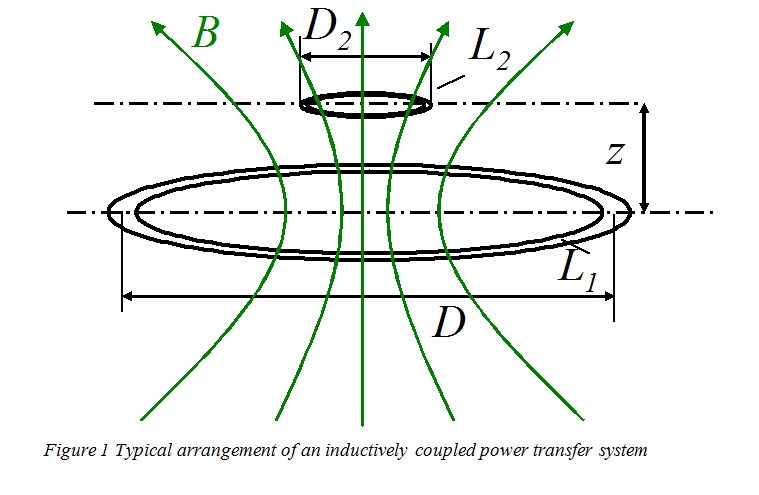Principle of Inductive Power

Dries van Wageningen and Eberhard Waffenschmidt, Philips Research
The basic principle of an inductively coupled power transfer system is shown in Figure 1. It consists of a transmitter coil L1 and a receiver coil L2. Both coils form a system of magnetically coupled inductors. An alternating current in the transmitter coil generates a magnetic field which induces a voltage in the receiver coil. This voltage can be used to power a mobile device or charge a battery.
The efficiency of the power transfer depends on the coupling (k) between the inductors and their quality (Q). (See also Figure of merit)
The coupling is determined by the distance between the inductors (z) and the ratio of D2 /D. The coupling is further determined by the shape of the coils and the angle between them (not shown)

